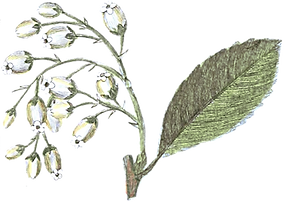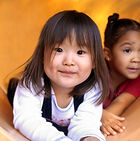
healing through play
Play Therapy Based Interventions
Movement and Play
Music and Movement with the use of NMT
The Neurosequential Model of Therapeutics (NMT) is recognized as a supportive tool professionals and parents alike can use to support children affected by abuse or trauma. The NMT model understands that prolonged stress and trauma negatively affects brain development (Dunbar, 2013)
By using patterned, repetitive movement and regulatory activities children learn positive self-regulating strategies (Dunbar, 2013).
What is it?
Music, movement, yoga (breathing), drumming or therapeutic massage.
How does NMT work?
It is understood that pattern, repetitive movements can shape and organize the brain. Contrary, chaotic experiences often create dysfunctional organization. (Dunbar, 2013).
Potential benefits of NMT activities:
-
Self regulation and controlled impulses.
-
Attachment is created with parent/therapist and child, supporting a child’s positive self-concept.
-
Ease Anxieties and Worries with use of breathing and calming techniques (Dunbar, 2013).

Movement
Greeting Circle/ Sunflower Dance
Materials: N/A
Objective: Warm up, connection with body and imagination.
Activity: Have the children all form a circle on the carpet. Pick a child to be the gardener who will water the garden (Children will take turns playing this role). Have the other children curl up into little balls and imagine themselves being seeds in a garden. Narrate a story of the gardener coming around and watering his/her garden. Describe the warm sun coming out. Describe the seeds starting to sprout out from the soil. Describe how the seeds are growing taller and taller. Have the children reach their arms up to the warm sun. Have the children spread their arms out like sunflower petals that just blossomed open, model this movement. Describe a light breeze and have the children sway side to side with the wind.
Adapted from: Dunbar, J. (2013). YWCA of calgary: Children exposed to domestic violence children's group facilitator manual. Calgary, AB
Mini Tramp
Materials: Mini trampoline
Objective: Supports child's nervous system, calming.
Activity: Have mini trampoline in therapy room. Facilitate child's play and keep in mind safety.
Adapted from Stickids (2015). Summary Planner. www.stickids.com
Hoppy Ball
Materials: Bouncy ball, large empty recycle bin
Objective: Calming, settling.
Activity: Have child hop around on bouncy ball. In addition, have bouncy ball placed in bin to create a seat for child.
Adapted from Stickids (2015). Summary Planner. www.stickids.com
Lazy 8’s - Elephant Walk
Materials: N/A
Objective: This is a Brain Gym activity that helps to connect the left and right hemispheres of the brain through patterned repetitive movement. It also helps to improve motor coordination.
Activity: Draw a picture of a sideways figure 8 on a big piece of paper with a crayon or marker (a marker may be easier). Touch the marker to the very middle of the figure 8 and use the marker to trace the figure 8, counter clockwise first (left), then clockwise (right) and back to the centre. Keep tracing it this way until your child gets the hang of it. They will then do the same movement later using their arm.
Adapted from: Dunbar, J. (2013). YWCA of calgary: Children exposed to domestic violence children's group facilitator manual. Calgary, AB
Machine Running
The running and deep breathing offers children a unique type of exercise to help prepare their minds and bodies for activities or discussions.
Activity: Child to stand in a spot in the room that they choose. Ask child to continually run in the same spot for 30 seconds. After 30 seconds have the child stop and take 3 big deep belly breaths. Belly breathing: when we breathe into our bellies (instead our chest) this sends a signal to the brain that we are safe and calm. This small change helps to start the relaxation process and to get rid of feelings such as anxiety and fear. Breathe in for a count of 3, hold for 3, and breathe out for a count of 3, hold for a count of 2-3. Repeat steps 2 and 3 approximately 3-5 times. Ask the child to notice and identify any feelings or sensations in their body.
Adapted from: Dunbar, J. (2013). YWCA of calgary: Children exposed to domestic violence children's group facilitator manual. Calgary, AB

Yoga
Monkey pose
Materials: N/A
Objective: Improves concentration
Activity: Sit down on your bottom and criss-cross your legs.
Sit up tall with your shoulders. Bring one hand in front of your belly.
Breathe in and stretch one arm up to the sky in a quick movement.
Breathe out and bring your hand back down.
Adapted from: Dunbar, J. (2013). YWCA of calgary: Children exposed to domestic violence children's group facilitator manual. Calgary, AB
Turtle pose
Materials: N/A
Objective: Relaxes mind & body
Activity: Sit down, bend your knees. Bring the bottom of your feet together.
Stretch your arms underneath your knees (hands are sticking out). Bend forward. Bring your nose to your knees to hide inside your turtle shell
Count to three. Lift up your head. PEEK-A-BOO!
Adapted from: Dunbar, J. (2013). YWCA of calgary: Children exposed to domestic violence children's group facilitator manual. Calgary, AB
Giraffe pose
Materials: N/A
Objective: Strengthens legs
Activity: Stand up tall and jump feet apart. Bend your knees and elbows. Bring one of your elbows down to your knee. Stretch opposite arm up to the sky to make the long giraffe neck. The giraffe is hungry; munch on some leaves high up in the trees. MUNCH, MUNCH, MUNCH!
Adapted from: Dunbar, J. (2013). YWCA of calgary: Children exposed to domestic violence children's group facilitator manual. Calgary, AB
Flamingo pose
Materials: N/A
Objective: Improves balance
Activity: Stand up tall. Tuck your arms under your shoulders – like wings.
Bend one knee and lift off the ground. Try balancing like a flamingo.
Count to five. Switch legs.
Adapted from: Dunbar, J. (2013). YWCA of calgary: Children exposed to domestic violence children's group facilitator manual. Calgary, AB
Cat pose
Material: N/A
Objective: Stretches upper body
Activity: Place you hands and knees on ground. Press into your cat paws
Gently tuck your chin to your chest. Look up to your belly button
Arch your back. Slowly tilt your tail from side to side as you MEOW like a cat.
Adapted from: Dunbar, J. (2013). YWCA of calgary: Children exposed to domestic violence children's group facilitator manual. Calgary, AB
Cow pose
Material: N/A
Objective: Stretches upper body
Activity: Place your hands and knees on the ground. Press into your cow hooves. Drop your belly down toward the ground and lift your head up to the sky. MOO!
Adapted from: Dunbar, J. (2013). YWCA of calgary: Children exposed to domestic violence children's group facilitator manual. Calgary, AB